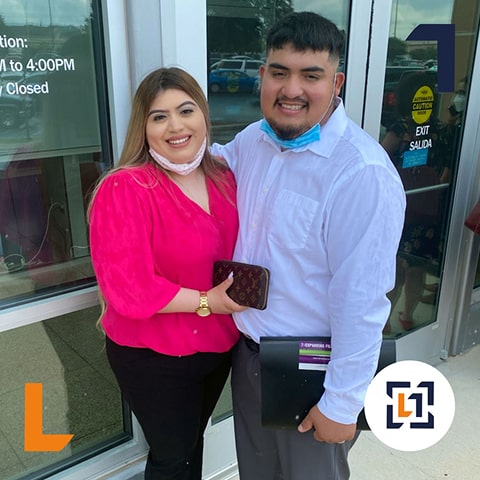Many foreign nationals already in the United States view the Adjustment of Status application as a crucial step in obtaining a Green Card. Such status grants them the right to live and work permanently in the country. In this article, learn about the AOS process and its various aspects. It includes the eligibility criteria, required documents, processing times, potential delays, interviews, common RFEs, and filing costs.
The Adjustment Of Status Application
In U.S. immigration, navigating the complexities of legal processes can be daunting. Transitioning from a temporary status to lawful permanent residency is especially challenging. Therefore, it is vital to know the intricacies of Adjustment of Status, its significance, eligibility criteria, and the steps involved.
Eligibility Criteria
Being eligible for Adjustment of Status primarily depends on the immigrant’s relationship to a U.S. citizen or a Green Card holder, employment category, or special humanitarian reasons. So, who can apply?
- Immediate relatives of U.S. citizens are qualified to apply, including spouses, parents, and unmarried children under 21.
- Family-sponsored immigrants are also eligible. It includes spouses and unmarried children (over 21) of U.S. citizens or Green Card holders and married children and siblings of U.S. citizens.
- Employment-based immigrants, including individuals with job offers in the United States or those with extraordinary field abilities.
- Lottery winners who have received an immigrant Visa through the DV program.
- Special immigrants, such as religious workers, abused spouses and children. It also includes foreign nationals who have served in the U.S. Armed Forces.
Required Documents
You must meet certain general requirements when applying for a Green Card through Adjustment of Status. These include the following:
- Falling into an eligible immigration category.
- Having a valid non-immigrant status.
- Completing Form I-485 and providing supporting documents like birth and marriage certificates.
- Attend a biometrics appointment.
- Show financial support through an Affidavit of Support.
- Prove your admissibility while maintaining a continuous presence in the United States.
- Undergo a medical examination.
Remember that specific requirements can vary depending on your category, so it’s best to refer to the USCIS website or seek guidance from an immigration attorney for your case.
The Timeline Of A Green Card Application
The processing times for AOS applications vary widely depending on several factors. It includes the applicant’s country of origin, the current Visa bulletin, and the USCIS workload. On average, it may take several months to over a year. Processing delays are not uncommon for various reasons, such as:
- A high volume of applications the USCIS receives.
- Additional administrative processing for security checks or background investigations.
- Request for additional evidence (RFE) from USCIS, requiring applicants to provide further documentation to support their eligibility.
- Technical glitches or delays in USCIS systems.
Part of the Adjustment of Status process is the interview. To pass, you must prepare and familiarize yourself with what happens during this phase.
The Interview Process
One of the most critical steps in this adjustment application is the interview. The USCIS officers assess the applicant’s eligibility and determine whether they deserve a Green Card. It usually takes place at a local USCIS office and involves various aspects.
What To Expect
Before heading to the interview venue, it pays to know the process. Here are the usual steps:
- Verification of documents. The officer will review the application and supporting documents to ensure accuracy and authenticity.
- Biometrics. Applicants must undergo fingerprinting and other biometric procedures.
- Personal interview. The officer will ask questions about the applicant’s background, immigration history, and the relationship, if any, with the petitioner.
How To Prepare
Preparing for the interview is crucial in acquiring a Green Card. It is a step allowing the USCIS officers to assess the applicant’s eligibility and the application’s authenticity. Ample preparation boosts applicants’ confidence and improves their chances of success. Here are some vital tips on how to get ready for it.
Familiarize Yourself With Your Application
Thoroughly review your entire application before the interview. Understand all the information you provided and ensure its accuracy. Take note of any potential discrepancies and be ready to explain them to the interviewer.
Gather All Relevant Documents
Bring all the necessary documents and additional evidence supporting your eligibility for the Green Card. It includes identification documents, relationship proof, if applicable, and financial records.
Practice Answering Potential Questions
Rehearse answering possible questions that the USCIS officer might ask during the interview. They may cover various topics and your plans for the future in the United States. It may include your background, immigration history, and relationship with the petitioner, if any.
Be Truthful & Honest
Throughout the interview, always be truthful and honest with the USCIS officer. Providing false information can lead to severe consequences, including application denial and potential immigration repercussions.
Brush Up On Your English Language Skills
Practice your English skills before the interview, especially if it’s not your first language. Although USCIS may provide interpreters in some cases, demonstrating proficiency in English can make the process smoother.
Understand Its Purpose
The interview aims to verify the information in your application and ensure you meet the eligibility criteria for the Green Card. The officer may also ask questions to confirm that your relationship with the petitioner is genuine and not solely for immigration purposes.
Be Punctual & Dress Appropriately
Arrive on time as punctuality is crucial. Dress neatly and professionally to make a positive impression.
Address Any Requested Changes Or Updates
If USCIS asks for any updates or changes to your application before the interview, ensure you accomplish them and bring the required documents. Remember that every AOS interview is unique and may vary depending on circumstances. Being well-prepared and demonstrating a genuine commitment to complying with U.S. immigration laws are critical elements for a successful application.
Following these tips and being honest and forthcoming during the interview can increase the chances of obtaining a Green Card.
While every step in an AOS application is crucial, applicants often encounter Requests for Evidence (RFEs). It means you need to supply additional documentation for clarification.
Common RFEs In An AOS Application
When applying for Adjustment of Status to obtain permanent residency in the United States, you may encounter Requests for Evidence (RFEs). USCIS may have these requests for additional documentation or clarification on certain aspects of the application.
Insufficient Supporting Documents
Among the most prevalent RFEs are those arising from missing or inadequate supporting documents. USCIS may ask for additional evidence to verify the applicant’s eligibility, such as proof of relationship, employment status, or financial capacity.
How do you address this? Review the RFE notice and promptly provide all requested documents. Present the evidence clearly and concisely to facilitate the officer’s review. Before submission, ensure that all requirements are accurate and up-to-date.
Inconsistencies In Information
USCIS may issue an RFE if discrepancies exist between the application and other documents, such as previous Visa applications or tax records. How do you respond to this? Carefully examine your entire application to identify any inconsistencies. Explain any discrepancies and submit relevant documents to support the accurate information.
Deficiencies In The Medical Examination
If Form I-693 (Medical Examination) submitted with the application is incomplete or outdated, USCIS may request a new examination. What do you need to do? Schedule a medical examination with a designated civil surgeon and promptly submit the updated I-693 in response to the RFE.
Insufficient Financial Support
USCIS may issue an RFE if the petitioner’s Form I-864 (Affidavit of Support) does not meet the income requirements. How do you resolve this? Provide all required financial documentation to demonstrate the petitioner’s ability to support you financially. It may include tax returns, pay stubs, and employment verification letters.
Knowing how to address RFEs is essential to boost your success rate. Furthermore, understanding the financial obligations related to the application is equally vital to prevent delays and ensure a smooth process.
Understanding AOS Fees
Before commencing the process, carefully assess the required fees and associated costs. Create a budget plan and ensure sufficient funds to cover all expenses.
- Form I-485 filing fee. The application fee (Form I-485) is subject to change and is typically a substantial cost. As of year 2023, it is approximately $1,140.
- Biometrics fee. It covers the cost of fingerprinting and background checks. As of the year 2023, it amounts to $85. It applies to applicants ages 14 to 78.
Seek The Help Of An Immigration Attorney
The help of an immigration attorney can provide significant advantages. Immigration laws and procedures can be intricate and bewildering, but an experienced attorney can adeptly navigate these complexities. They possess extensive knowledge of the immigration system, keep abreast of the latest legal changes, and comprehend the specific requirements for various categories.
Through their experience, they can evaluate an individual’s eligibility, compile the necessary documentation, and build a robust case to address potential challenges or obstacles. Additionally, they can offer guidance during interviews, handle USCIS requests for evidence (RFEs), and advocate for applicants, ensuring a more streamlined and efficient process.
With the help of an immigration lawyer, applicants can avoid costly errors and delays that might arise from incomplete or inaccurate paperwork. Furthermore, an attorney increases the chances of successful application, alleviating stress and uncertainty.
The Adjustment of Status (AOS) application process is essential for individuals who want to obtain permanent residency in the United States. Familiarity with the eligibility criteria and engaging the services of an immigration attorney can significantly simplify the application journey and enhance the chances of a successful outcome.
A skilled attorney offers personalized support and guides applicants throughout the process, reducing the risk of delays or denials. They can confidently deal with the process by being well-prepared, addressing Requests for Evidence (RFEs), and being aware of the costs. Doing so will likely achieve their dream of obtaining a Green Card in the United States.
























